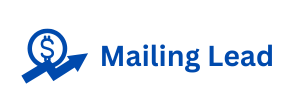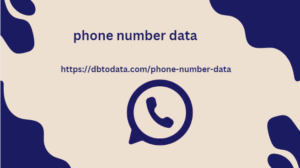In October, the number of phishing sites increas by 229% — this is how hackers prepare for the New Year. They are more active during the sales and Christmas discount season, so you ne to take care of protecting your sites and applications in advance. What types of cyberattacks exist, how not to fall for the attackers’ hook and keep your and your clients’ data safe — we analyze in the material.
Malicious programs
Malware is software that is develop for specific purposes: stealing confidential information, compromising data, gaining control over a device. Almost half of the high-severity cyberattacks record at the beginning of 2023 were associat with the use of malware.
- decrease in attendance,
- search engines mark the site as undesirable,
- rirection to third-party resources.
There are dozens of types of malware, but we will look at the most common ones:
1. Viruses. These are programs that attach themselves to clean files and create copies of themselves to spread to other devices. When an infect program is open, the virus is launch with it – they cause damage to data, software and even hardware. Viruses are usually us to steal personal data and money, as well as to create botnets.
2. Botnet. Using various programs, attackers can remotely control devices for phishing, spam, or DDoS attacks. Infect devices are call bots, and the network they are connect to is call a botnet. Reg.ru was recently attack by such botnets. Malicious programs attack almost 10 thousand IP addresses of the company. But specialists repell the threat, and all services continu to work.
Vaccination against HPV
Here are some tips to help protect your data and website from malware:
- Regularly update your software : content management system (CMS), plugins, themes. Download them only from official sources. The newer the version, the fewer vulnerabilities, because updates often contain security fixes.
- Use strong and unique passwords. Change passwords for accounts, site admins, databases and control panels every 3-6 months. Do not store passwords in FTP clients and browsers.
- Set unique superuser names. A superuser is someone who has full access to the site and system files. Often, such accounts are call Admin, which is a mistake – such a name is easier to hack.
- Set up backups. In case of a malware attack, backups will allow you to restore your site.
- Set up regular virus scanning. Connect antivirus for websites so you don’t forget about checking and fixing vulnerabilities in time. Don’t forget about protecting your computer.
- Install security plugins. Use reliable security plugins or firewalls. They will help detect and block malicious activity and provide constant monitoring.
Social engineering and phishing
Social engineering is a method of manipulating people in order to obtain confidential information or access to protect systems. To get what they want, attackers can pose as other people (for example, a security officer), use physical mia and devices (for example, disks), and even spy on the victim. We have already written in detail about popular methods of social engineering and how to resist it .
Most businessmen in developed countries use UAE phone number data to expand their sales. In UAE phone number data you will find all uae phone number data the leads for your business through which you can connect with customers very easily. Apart from that we will help you to connect with all the SMS service providers in the specific region.
Vaccination against phishing
Sometimes even experienc users get hook and become victims of phishing – it is not always possible to immiately determine whether the letter is fraudulent. But the risk can be minimiz. Here are our recommendations on how to protect yourself and your data:
- Enable two-factor authentication on whatsapp number materials email and social networks.
- Do not follow suspicious links and check the spelling of the domain name: on phishing sites there will be an error in the brand name.
- Do not open emails from suspicious or unknown senders .
- Study the contents of the letter – if it is poorly formatt and there are errors and typos in the text, it is definitely a phishing scam.
- Update your software, browsers and applications – new versions are more secure.
- Don’t open sites mark “not secure” – most browsers will display this warning if the site doesn’t have an encrypt secure connection. Install an SSL certificate on your site .
- For corporate mail, enable DMADC and set up a PTR record . We talk about these and 6 more ways to protect corporate mail in the article .
- Be vigilant and save our checklist “How to check a website for phishing” .
Defac
eface (English deface – to spoil the appearance) is an attack on a website, in which hackers publish their messages on the main or secondary pages. They usually contain political, religious motives, advertising, warnings or threats. Defacement is usually arrang to achieve one of the following goals:
- make a name for yourself and gain recognition in the hacker community,
- get ransom for deleting an image,
- spoil the company’s reputation,
- declare one’s civic position (hacktivism).
To gain access to a site, various hacking techniques are us, including malware. In addition, attackers can damage the site’s files or delete it completely. Therefore, it is important to take precautions.
Vaccination against defacement
To protect against defacement, the same steps phone number qa describ above will work – update your software regularly and use strong passwords.
The difficulty is that when restoring a site from a backup copy, the vulnerability that allow hackers to gain access may return. To prevent this from happening, you can connect plugins and systems for monitoring activity and page changes to the site — for example, Website File Changes Monitor is suitable for WordPress. It will send a notification if someone tries to it pages.
DoS and DDoS
DoS (from English Denial of Service) and DDoS (Distribut Denial of Service) are attacks aim at overloading the system:
- In the case of DoS, the attacker overloads the resources of the target system using a single device. To protect against DoS, it is enough to block the IP address from which the attack is carri out.
- DDoS is an attack from different devices and IP addresses using a botnet. Such an attack is more difficult to repel – requests to the service come from hundrs and even hundrs of thousands of devices.



